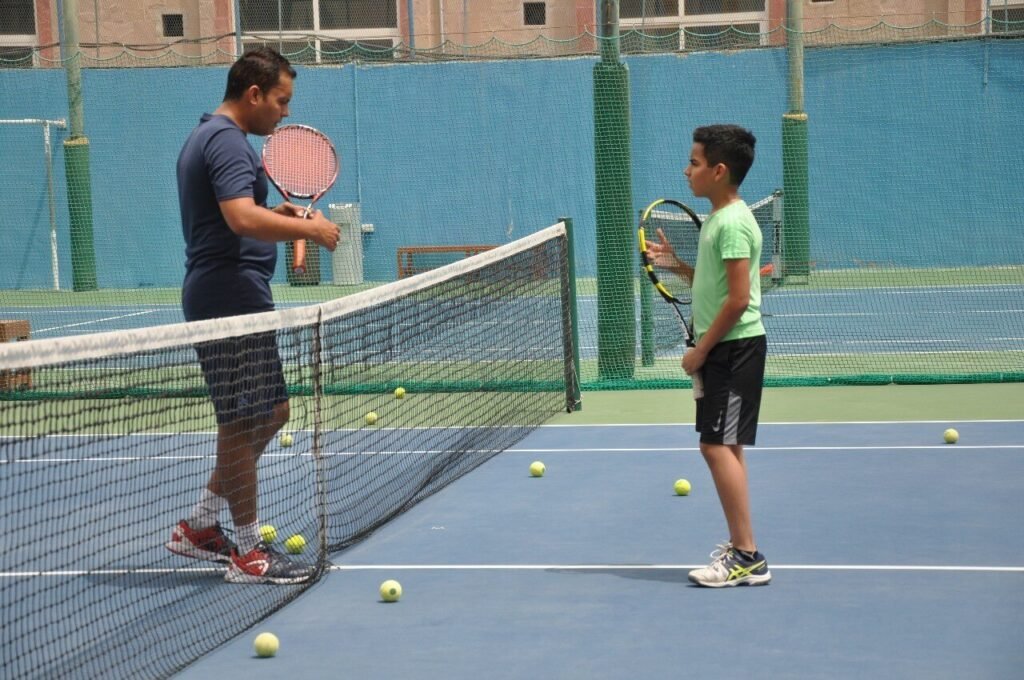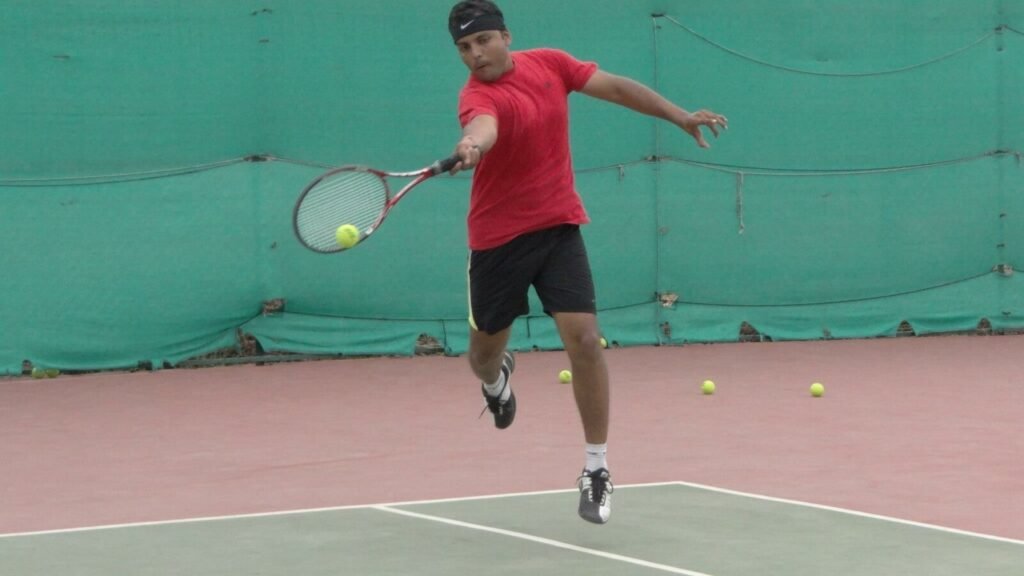
Teaching your child how to play tennis can be a rewarding experience. One important skill in tennis is the forehand groundstroke, a basic move for good playing.
This blog will walk you through easy steps to help your child learn this important skill simply and clearly.
Step 1: Start with the Right Grip
The grip is crucial because it helps control the racket and allows your child to feel the ball when hitting it. A common grip used for the forehand is the semi-western grip. Here’s how to do it:
- Have the child hold the racket so their palm is slightly facing up.
- Ensure the index finger is a little spread out from the other fingers. This gives better control and stability.
- The grip should feel comfortable, not too tight, and allow your child to swing the racket easily without losing control.
Tip: Check the grip again if the racket feels heavy. A good grip makes the racket feel lighter and easier to handle.
Step 2: Get into a Ready Position
Once the child has the grip down, the next step is to teach them the “ready position.” This is how they should stand when waiting to hit the ball. A good, ready position will make it easier for them to react quickly when the ball comes their way.
To help them get into this position:
- Have your child stand with their feet shoulder-width apart, knees slightly bent.
- The racket should be held in front of their body, ready to swing.
- Encourage them to stay light on their feet, even bouncing slightly from side to side. This keeps them alert and ready to move.
Step 3: Turn the Body for Preparation
When the ball is coming towards your child’s forehand side, they first need to turn their body. Teach them to:
- Rotate their upper body sideways so their non-dominant hand (the one not holding the racket) helps with the preparation.
- The racket should be lifted slightly behind them but not too far back.
- Their knees should stay slightly bent, ready to move towards the ball.
Step 4: The Swing Begins
Now that your child is ready, it’s time for the swing! This step is all about letting gravity help with the swing. Encourage your child to:
- Let the racket drop naturally as they start to swing forward.
- The wrist should stay loose and relaxed, allowing the racket to fall smoothly into the right position.
- Don’t worry if the swing feels slow at first – getting the motion right is more important than hitting the ball hard.
Step 5: Accelerate the Racket
Once the racket has dropped, your child can accelerate it toward the ball. This is where the power comes from. Here’s how to guide them:
- Teach your child to rotate their hips as they swing the racket forward. This body movement adds power to the stroke.
- The arm should stay loose, and the wrist should lag slightly. This creates a natural snapping motion that increases speed without much effort.
- Make sure they focus on timing. The power should come from the body’s rotation, not just swinging the arm.
Step 6: Follow Through
The final step is the follow-through. After hitting the ball, your child should continue their swing. This helps them control the shot and improves accuracy. To do this:
- Teach your child to extend their arm after hitting the ball, finishing the swing over their opposite shoulder.
- The racket should move straight toward the target, helping with consistency.
Practice Makes Perfect
Now that your child has learned the basic steps, the key to improvement is practice. Here are some simple tips to keep in mind:
- Start slow. Have your child practice each step separately before combining them into a full swing.
- Use soft, low-pressure tennis balls that are easier to hit. These balls don’t bounce as high, making it simpler for your child to get comfortable with their swings.
- Encourage your child to keep practicing the right form, even if it initially feels awkward. Consistency is more important than hitting powerful shots in the beginning.
Make It Fun!
Learning a forehand groundstroke doesn’t have to feel like hard work. Make practice fun by setting up games and challenges for your child:
- You can set up targets on the court and have them aim for specific spots.
- Celebrate small successes, like when they hit the ball over the net for the first time.
- Most importantly, keep the atmosphere positive. Kids learn best when they’re having fun!
Conclusion
Focusing on the correct grip, preparation, swing, and follow-through can help your child build a strong foundation for their tennis journey.
If you’re looking for additional support or want to enroll your child in tennis lessons, don’t forget to check out some of the best tennis academies for kids in Dubai, where professionals can help guide their growth in the sport.


